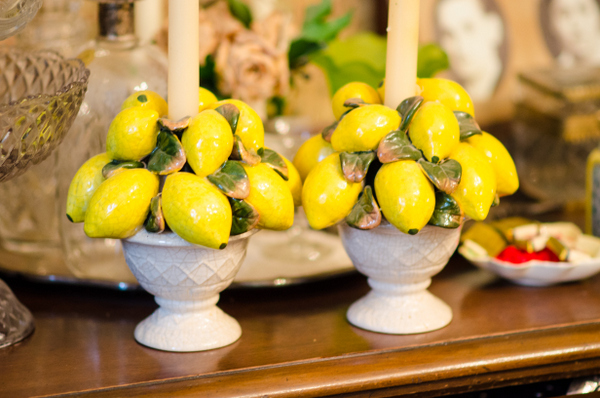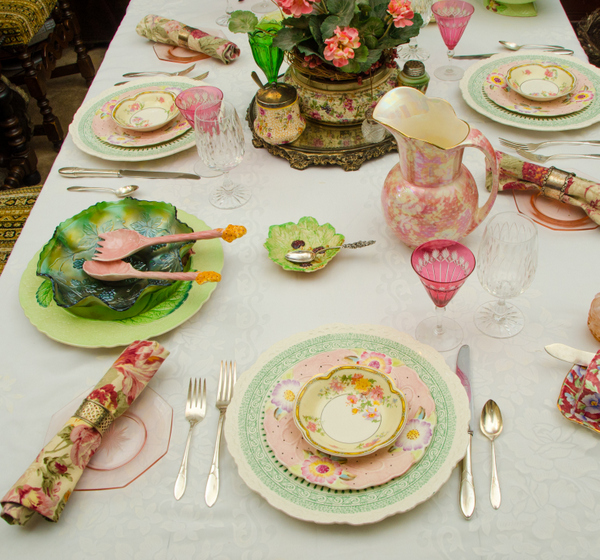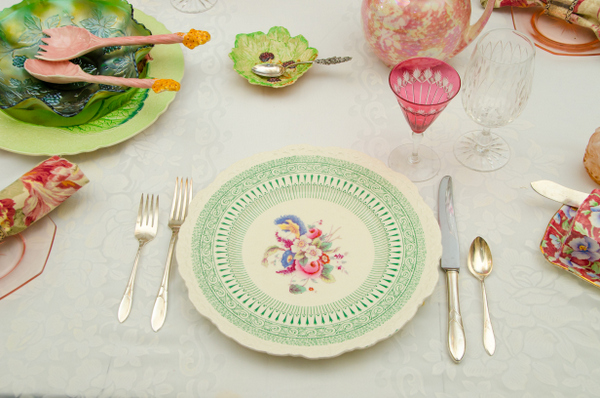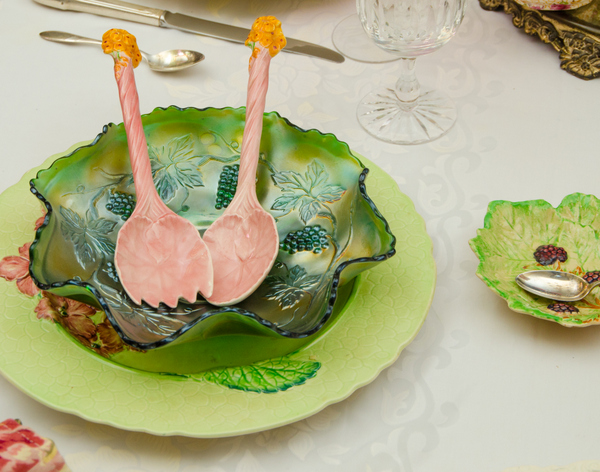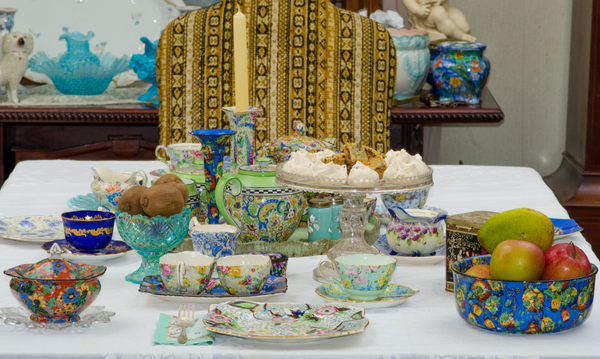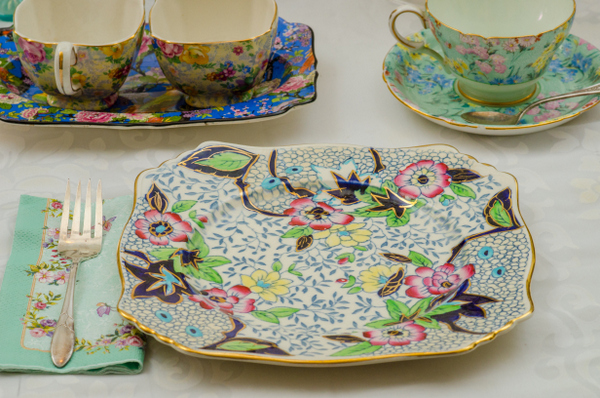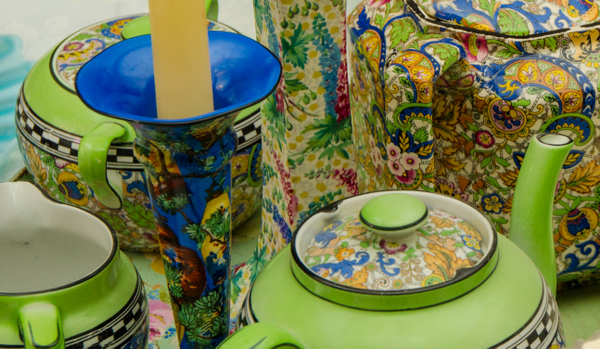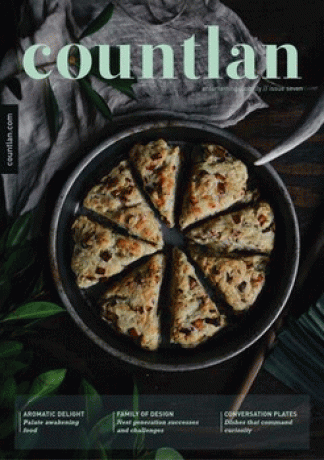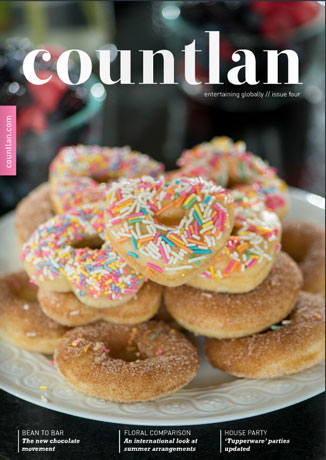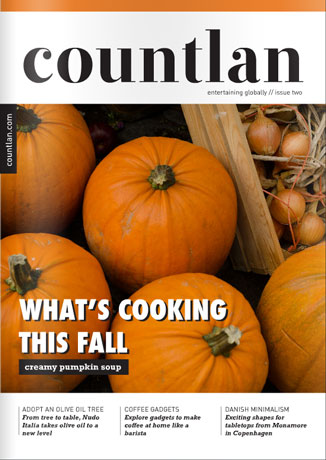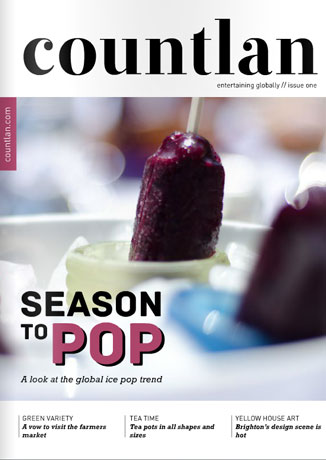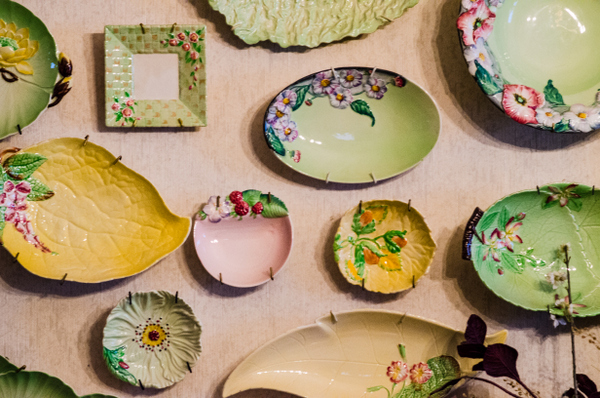
Behind the Scenes: The Chintz Collector
Chintz: Derived from the Sanskrit word chint meaning “variegated, flecked or coloured,” chintz is a pattern with a fascinating history in which economics, politics and fashion intertwine over a 400-year saga. Chintz got its start in India, where a Mughal emperor with a passion for flowers championed their use as a decorative motif in the 1600s. The patterned cloth gained an eager following in Europe after a group of powerful trading companies purchased loads of hand-painted chintz textiles and introduced them to the markets of England, France, Holland and Denmark.
The brightly coloured floral patterns become so popular in fashion and home décor that the English and French governments banned the import of chintz out as a preventative (or protectionist) measure to save their local textile industries. However, loopholes prevailed. Chintz continued to find its way into France and England, and eventually the manufacturing process and patterns were reverse-engineered and adapted for domestic markets.
With French and English textile industries producing their own chintz cloth, the trade ban was lifted by the 1750s. Of course, there can be too much of a good thing; widespread availability of the chintz pattern in an oversaturated market spurred new associations with the once-prized textile. Originally recorded in 1851 by George Eliot, the word “chintzy” became synonymous with things that were readily available or commonplace, further evolving into an association with being “cheap” or “gaudy.” It’s a long way from the rare value attached to chintz in the 17th century, but perhaps with enough time, changes in tastes and language will bring about its renaissance.
INTERVIEW: Arna Sloan on Collecting, Antiquing and Using Your Treasures on the Table (Issue 04 Countlan Magazine)
01 What does it mean to be a collector?
To me being a collector means having a group of items which have a common theme. It could be the place of origin, the time period, the style, the size, the colour, what it was used for, etc. I also must want to look at it every day and see its beauty. For example, my favourite china collections are Carltonware and Chintz. My love of flowers and gardening is reflected in the lovely floral patterns found on this English china.
02 What does collecting signify to you?
I have always loved old things and have fond memories of my mother and grandmother entertaining with beautiful china and silver pieces. As a child, I remember teacups being set out on the table for parties and deciding which lovely one I would choose if I had been old enough to be included. Collecting vintage tableware reminds me of the elegance of entertaining in a bygone age.
03 What is the allure of collecting?
I love learning about old things – even my university degree is in Anthropology. But since older antiques can be quite expensive and difficult to find, I mostly collect vintage items. I love to learn about what I collect and how it reflects the circumstances and values of that time period. For example, during wartime, colours used were often more sombre and decorative details limited, while the years that followed produced items which reflected the emerging sense of new hope and happiness. I enjoy imagining the story behind each piece in my collections and picturing where it had been.
04 What is the most fun part about being a collector?
I think the hunt is one of the best parts of collecting. One never knows what treasure will be found. Whenever we go on a driving trip, I love to stop at out of the way locations and see what is waiting to be discovered. Of course, if I know that I have found something at a very good price, it is even more fun.
05 If you were to give advice to someone who was interested in starting a collection, what tips would you share?
I think it is best to start a collection with something that you enjoy looking at. In addition, try to find something that is affordable and easy enough to find.
06 If you could travel somewhere to antique which country would it be?
Since most of my collectibles are from England, I think I would enjoy browsing anywhere in the UK for more of my favourite things.
07 How do you find reliable, quality, interesting places to purchase antique tableware?
I like to go to outdoor antique sales and antique malls as there are so many dealers in one location. There are a number of annual shows in the Toronto surrounding area such as Christie and Aberfoyle as well as several antique malls which are open year round. St. Lawrence Market has a weekly Sunday event and I also go to contents and garage sales on occasion. One can go online or search the local newspaper to find out where to go. Whenever I travel, I research beforehand where I can find antiques in that area.
08 Is it okay to bargain?
Bargaining is acceptable at many antique events. If fact, it really is expected as long as the offer is not an insult. On the other hand, an established antique store likely has a specific price already marked. It is worthwhile becoming educated in what you collect so that you can make wise choices and not overpay. You can ask for a discount if you are buying more than one thing from a specific dealer. It is also a good time to bargain if you are at a show which will soon be closing, since wrapping and packing up fragile pieces once more is not an easy task. But remember to make note of which booth you want to return to, as after a while they all look somewhat the same.
09 How long have you been a collector?
I guess I have been collecting forever, as I have always treasured family heirlooms and the stories associated with them. My great-grandfather was known as a collector and he brought back beautiful pieces from as far away as China, well over a hundred years ago. But my present passion for tableware began about ten years ago after I became enamoured by a friend’s large collection.
10 Do any items from your collection have an everyday use?
Although I love to look at my collections, I also delight in using some of my classic pieces. While I wouldn’t take down any of my Carltonware displayed on my dining room wall, I do have other similar pieces which I can use whenever I want. A salad looks so much nicer in a vintage bowl and I always bring squares or cookies to a party on a vintage plate. When I have company I like to use a variety of dessert plates, cups and saucers and individual creamers and sugar bowls from my collections. Not only is it fun, but it always leads to a good topic of conversation.
{GOOD TO KNOW-Carlton Ware: Carlton Ware is a famed brand of pottery that originated in 1890 in the city of Stoke-on-Trent in Staffordshire, England. Stoke-on-Trent is recognized as the World Capital of Ceramics. The home of pottery in England due to its abundance of clay used to make earthenware, the city is also known as “The Potteries.” In its century-plus-long history, Carlton Ware released a range of distinctive, hand-painted designs, including Blush Ware (gilded, with delicate pastels), Best Ware (bold and elaborate Art Deco and Chinoiserie patterns) and Salad Ware (embossed with floral and fruit patterns).}
